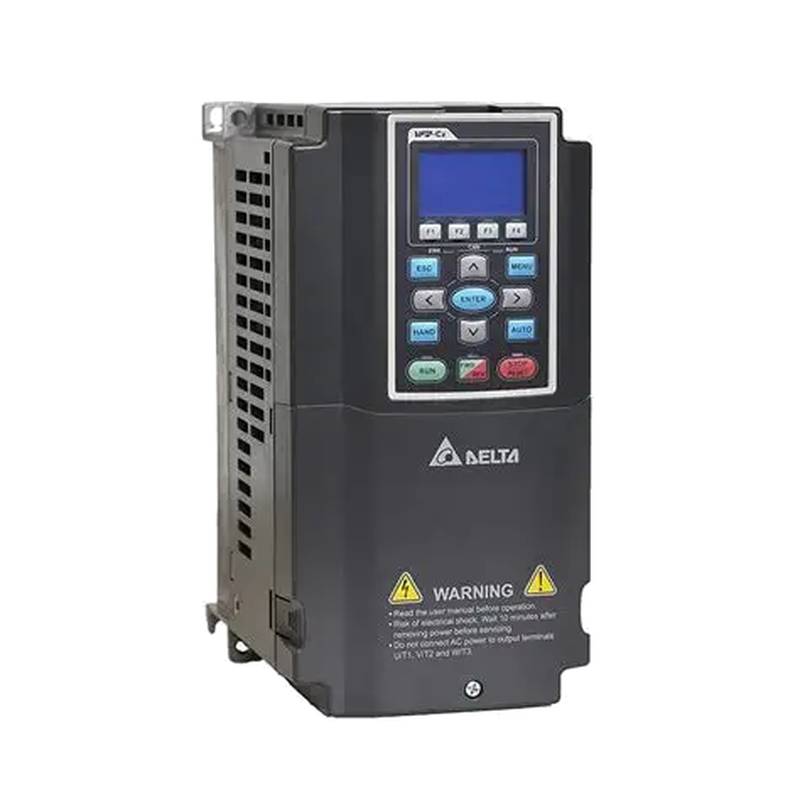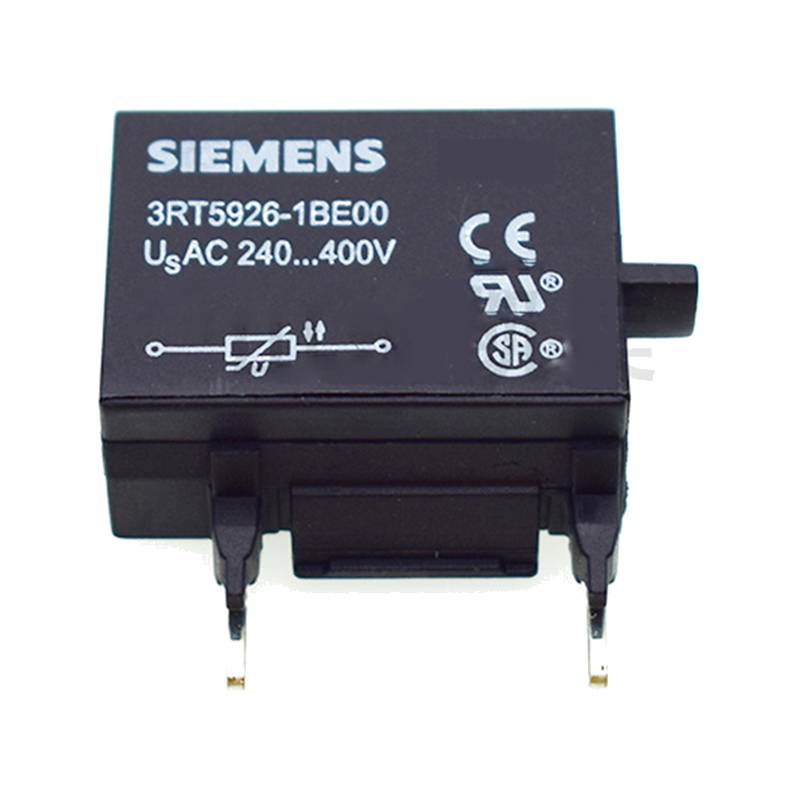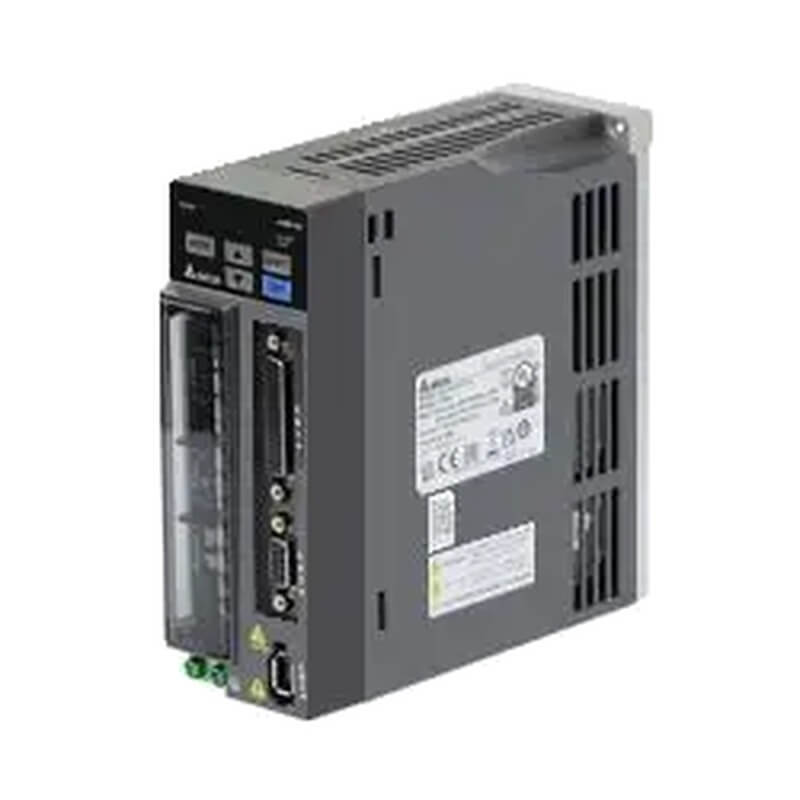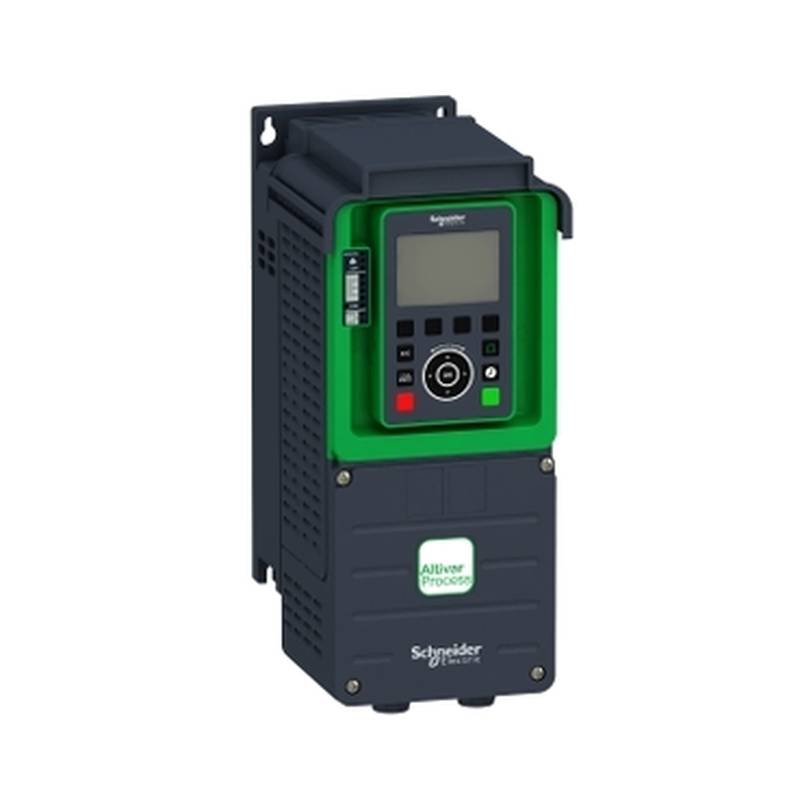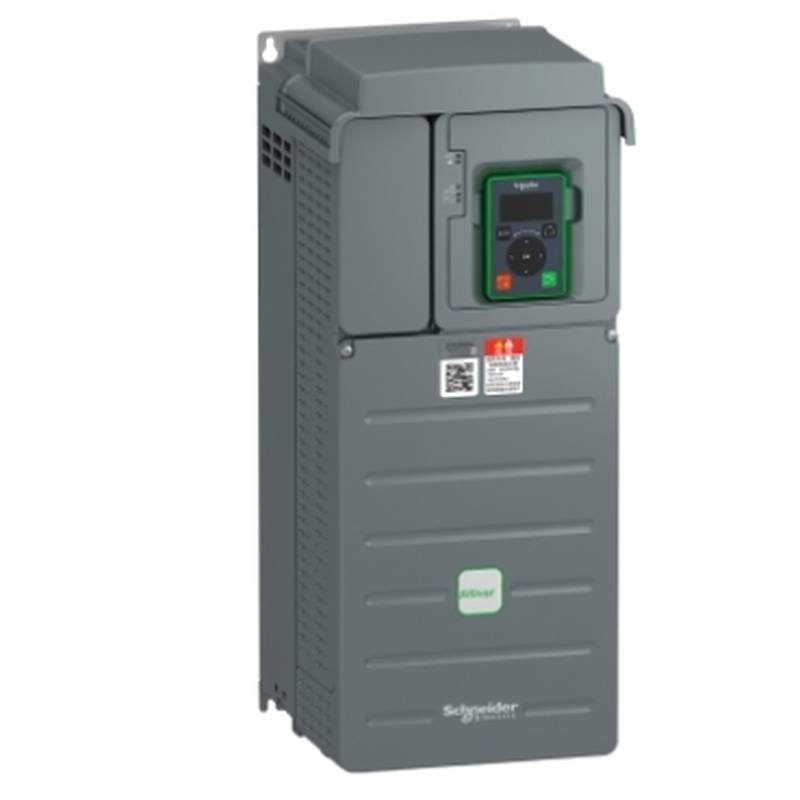
The Delta VFD185C43A-21 C2000+ Heavy Duty Fan Frequency Drive is a robust 18.5kW solution engineered for demanding industrial fan applications. This advanced variable frequency drive (VFD) excels in delivering precise motor control, significant energy savings, and enhanced operational efficiency. Key advantages include its heavy-duty design for continuous operation, advanced control algorithms for optimal performance, and comprehensive protection features safeguarding both the drive and the connected motor. With a rated power of 18.5kW and input/output voltage compatibility of 3-Phase 400-480V, the C2000+ series is purpose-built for high-performance fan systems.
Product Specifications
| Parameter | Specification |
| :----------------- | :------------------------------------------- |
| Model | VFD185C43A-21 C2000+ |
| Rated Power | 18.5 kW (25 HP) |
| Input Voltage | 3-Phase, 400-480V, 50/60 Hz |
| Output Voltage | 3-Phase, 0-480V, 0-1200 Hz |
| Rated Current | 37 A |
| Protection Class | IP20 |
| Control Method | V/f Control, Vector Control (Open/Closed Loop) |
| Communication | Built-in RS-485, Optional communication cards |
| Braking Unit | Built-in Dynamic Braking Module |
| Ambient Temperature| -20°C to +40°C (de-rating above 40°C) |
| Mounting | Wall/Cabinet Mount |
Core Features & Market Positioning
The Delta VFD185C43A-21 C2000+ distinguishes itself through its sophisticated control capabilities, including advanced vector control algorithms that ensure precise speed and torque regulation even under fluctuating load conditions. This level of control is critical for optimizing fan performance and extending equipment lifespan. Its heavy-duty construction, featuring robust components and effective thermal management, positions it as a reliable choice for harsh industrial environments where continuous operation is paramount. The integrated dynamic braking unit offers rapid and safe deceleration, a key differentiator for applications requiring frequent start/stop cycles or emergency stops. Furthermore, the C2000+ series' inherent energy-saving potential, achieved through precise speed adjustments, directly translates to reduced operating costs for end-users.
Key Application Scenarios
This 18.5kW Delta VFD is ideally suited for a wide array of heavy-duty fan applications across various industries. It is extensively utilized in HVAC systems for large commercial buildings, industrial ventilation, and air handling units, where precise airflow control is essential for maintaining optimal environmental conditions and energy efficiency. In manufacturing and processing plants, it serves crucial roles in exhaust systems, material handling conveyors, and process air circulation, ensuring reliable operation and preventing over-exertion of motor components. Its robust design also makes it suitable for applications in power generation, wastewater treatment, and mining operations, managing large industrial fans for cooling, ventilation, or exhaust purposes. The VFD185C43A-21's ability to handle demanding loads and operate reliably in challenging conditions solidifies its position as a go-to solution for critical fan installations.
Practical System Integration Guidance
Integrating the Delta VFD185C43A-21 into an existing system involves careful consideration of wiring and parameter configuration. For power connections, ensure the incoming power supply matches the drive's specifications (3-Phase, 400-480V). Utilize appropriately sized copper conductors and ensure proper grounding for safety and noise reduction. The motor connections should be made to the drive's output terminals (T1, T2, T3), respecting phase rotation. For control wiring, utilize the drive's terminal block for digital inputs (DI), digital outputs (DO), analog inputs (AI), and analog outputs (AO) to integrate with PLCs, sensors, and control panels. Initial parameter setup is crucial; essential parameters include motor data (rated power, voltage, current, frequency, poles) for accurate auto-tuning, as well as speed reference settings (e.g., VFD control via analog input or digital keypad). Advanced configuration may involve setting up acceleration/deceleration times, over-current limits, and communication protocols for remote monitoring and control.
Operation and Risk Mitigation
Operating the Delta VFD185C43A-21 requires adherence to safety protocols and an understanding of its operational parameters. Before powering up, verify all wiring connections and ensure the drive's ambient temperature is within its operating range (-20°C to +40°C). For environments exceeding 40°C, derating of the drive's output current is necessary to prevent overheating. During operation, monitor motor temperature and drive status via the LED display or communication interface. Common fault codes, such as E.OC (Overcurrent), E.OV (Overvoltage), E.UV (Undervoltage), and E.OH (Overheating), indicate specific issues requiring immediate attention. Addressing these faults typically involves verifying motor load, power supply stability, and drive ventilation. Implementing proper ventilation for the drive enclosure and ensuring the motor is appropriately sized for the application are key risk mitigation strategies to prevent premature component failure and ensure safe, continuous operation.
Scalability & Long-Term Value
The Delta VFD185C43A-21 C2000+ offers significant long-term value through its scalability and integration capabilities. Its compatibility with Delta's broader automation ecosystem, including PLCs and HMIs, allows for seamless integration into sophisticated control systems. The drive supports various communication protocols, such as Modbus RS-485 (built-in) and optional fieldbus cards (e.g., Profibus, DeviceNet), enabling robust data exchange and remote management within an Industrial Internet of Things (IIoT) framework. This connectivity facilitates predictive maintenance, performance monitoring, and energy management, crucial for optimizing operations in modern industrial settings. For systems requiring increased capacity, Delta offers a range of VFDs with higher power ratings, allowing for phased upgrades or expansion without compromising system architecture or requiring complete redesigns. This inherent flexibility ensures that the VFD investment remains relevant and adaptable to evolving operational demands.
FAQs
What is the primary function of the Delta VFD185C43A-21 C2000+?
This drive precisely controls the speed of industrial fans. It achieves this by varying the frequency and voltage supplied to the motor. This precise control leads to significant energy savings.
It also enhances operational efficiency by matching fan output to actual demand. The drive protects the motor and itself from electrical disturbances and overload conditions.
Its core purpose is to optimize fan performance while minimizing energy consumption and extending equipment lifespan in heavy-duty applications.
What are the key technical specifications of the Delta VFD185C43A-21?
The drive is rated for 18.5 kW (25 HP) and operates on a 3-Phase, 400-480V power supply. It provides an output voltage range of 0-480V and can handle a rated current of 37A.
It features IP20 protection, suitable for many industrial environments when properly enclosed. Control methods include V/f and advanced vector control for superior motor performance.
It also has a built-in dynamic braking module and supports RS-485 communication for integration into control networks.
What types of applications is this heavy-duty fan drive best suited for?
This VFD is ideal for demanding HVAC systems in large buildings and industrial air handling units. It's also well-suited for industrial ventilation and process air circulation in manufacturing.
Key use cases include exhaust systems, material handling, and critical airflow management in processing plants. It reliably manages large fans in sectors like power generation and wastewater treatment.
Its robust design ensures dependable operation in harsh environments, making it a prime choice for any application requiring continuous, high-performance fan operation.
How does the Delta C2000+ series offer energy savings?
The drive achieves energy savings by precisely matching fan speed to the actual air volume or pressure requirements. Instead of running at full speed constantly, it adjusts as needed.
This precise speed modulation significantly reduces electricity consumption compared to fixed-speed motor operation. It avoids wasted energy when full output is not necessary.
Optimizing fan output not only saves power but also reduces mechanical stress, leading to longer motor life and lower maintenance costs over time.
What communication protocols does the Delta VFD185C43A-21 support?
The drive comes with a built-in RS-485 communication port for standard industrial networking. This allows for easy integration with PLCs and SCADA systems using Modbus RTU protocol.
For broader compatibility, optional communication cards are available. These can enable protocols such as Profibus, DeviceNet, EtherNet/IP, and others, expanding network integration possibilities.
This communication capability is crucial for remote monitoring, control, diagnostics, and integration into smart factory or IIoT environments for enhanced data analysis.
What is the importance of the built-in dynamic braking module?
The dynamic braking module allows for rapid and controlled deceleration of the fan motor. This is vital for applications requiring quick stops or frequent start/stop cycles.
It dissipates the motor's kinetic energy during braking, preventing overvoltage faults that can occur when a VFD tries to stop a large inertia load. This ensures system stability.
By providing effective braking, it enhances operational safety, reduces stopping times, and protects the motor and driven equipment from mechanical shock associated with abrupt stops.
How do I perform initial parameter setup for the Delta VFD185C43A-21?
Start by entering the motor's nameplate data accurately into the drive's parameters. This includes rated power, voltage, current, frequency, and number of poles for precise operation.
Configure the speed reference source (e.g., analog input, digital keypad, or communication) and set acceleration/deceleration times to suit the application's load characteristics.
Perform an auto-tuning procedure to allow the drive to optimize its control parameters for the specific motor and load, ensuring peak efficiency and performance.
What are common fault codes and their meanings on this drive?
Common fault codes include E.OC (Overcurrent), indicating the motor is drawing too much current, often due to overload or acceleration issues. E.OV (Overvoltage) suggests voltage spikes in the system.
E.UV (Undervoltage) signifies insufficient input voltage, while E.OH (Overheating) points to excessive drive or motor temperatures. Other codes may relate to communication errors or internal drive faults.
Troubleshooting involves checking the load, power supply, motor integrity, and drive ventilation. Consulting the drive's manual provides detailed explanations and corrective actions for each fault code.
Can this VFD be integrated into an IIoT or digital manufacturing system?
Yes, the Delta VFD185C43A-21 is designed for integration into IIoT platforms. Its communication capabilities, especially with optional fieldbus cards, enable data exchange with supervisory systems.
This allows for real-time performance monitoring, predictive maintenance, remote diagnostics, and energy consumption tracking. Such data is essential for smart manufacturing optimization.
By connecting the drive to an IIoT platform, manufacturers can gain deeper insights into fan operation, improve operational efficiency, and reduce downtime through proactive measures.
What are the ambient temperature limitations and derating requirements?
The drive is rated for operation in ambient temperatures ranging from -20°C to +40°C. Operating within this range ensures optimal performance and longevity of the drive's components.
If the ambient temperature exceeds 40°C, the drive's output current capacity must be derated to prevent overheating. This means the maximum continuous current the drive can safely deliver is reduced.
For operation above 50°C, forced cooling or selecting a drive with a higher current rating for the application may be necessary to ensure reliable operation and prevent component failure.














